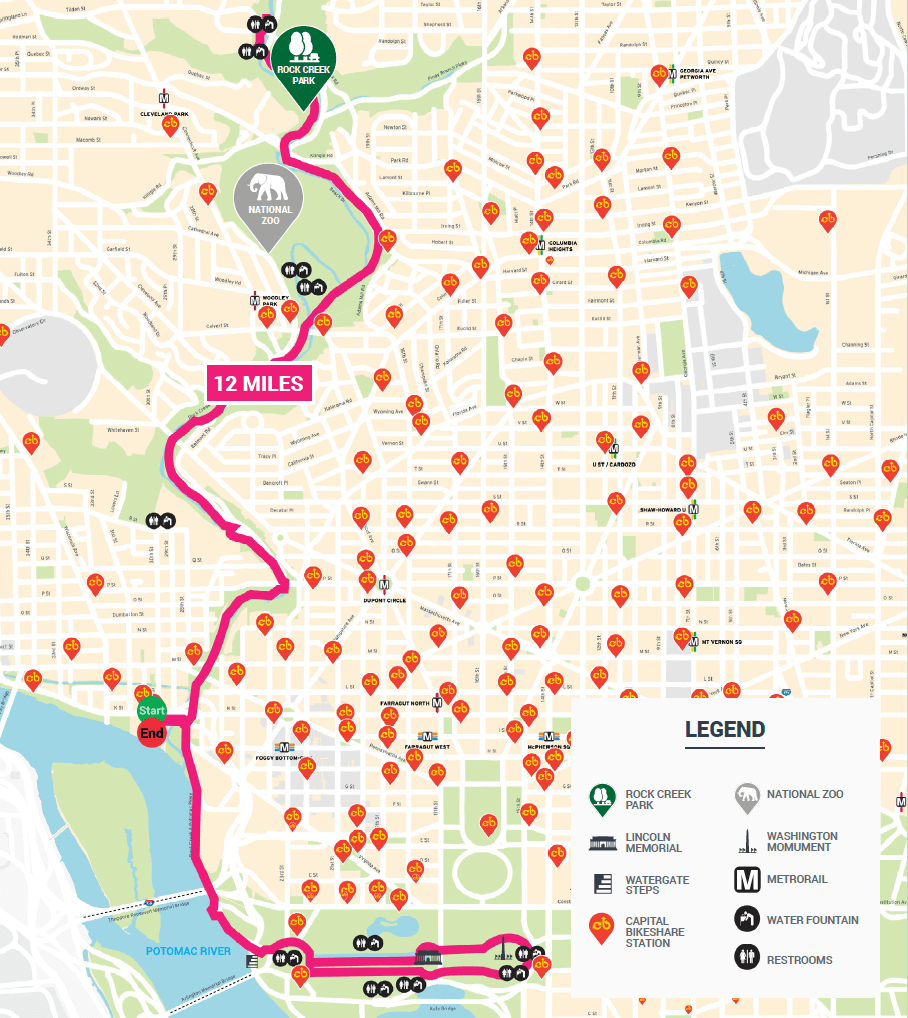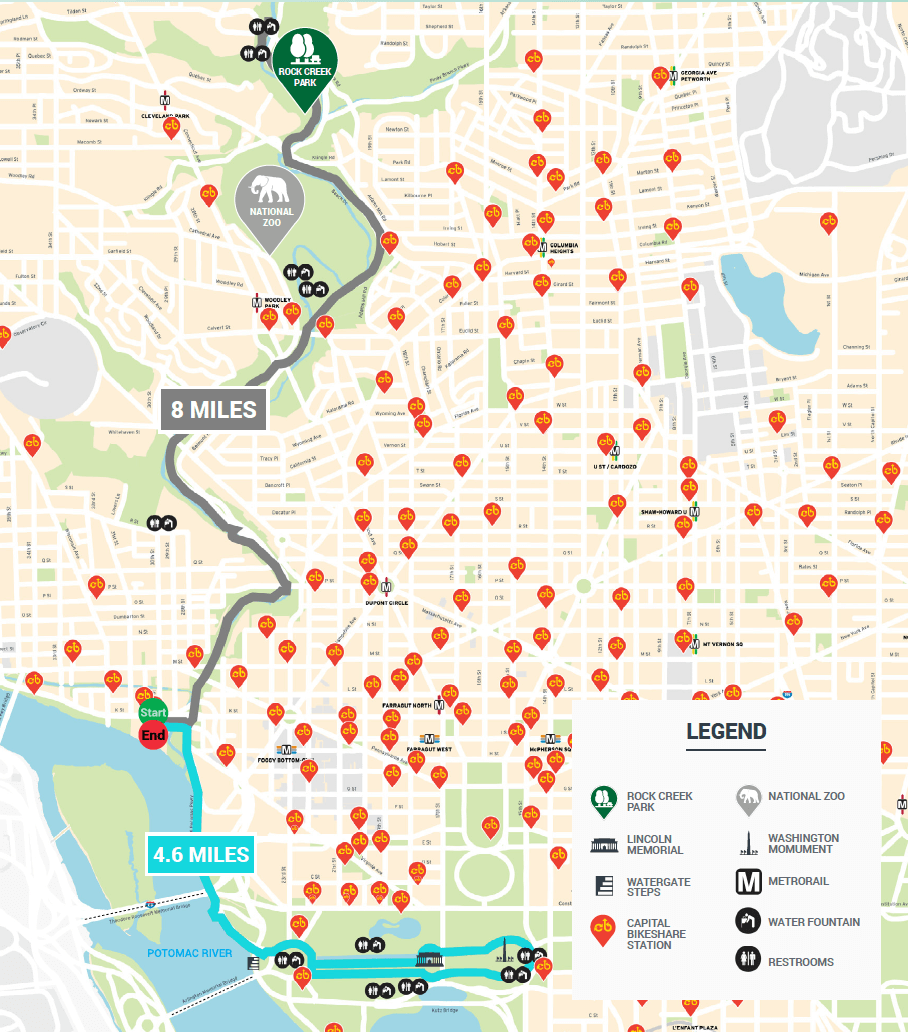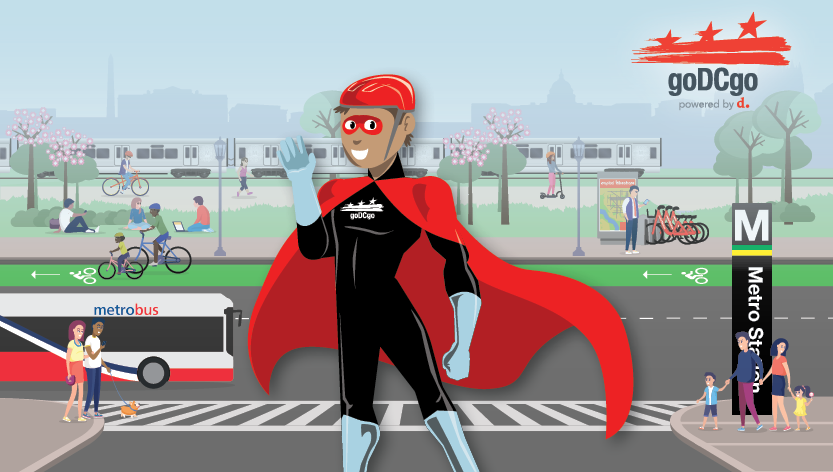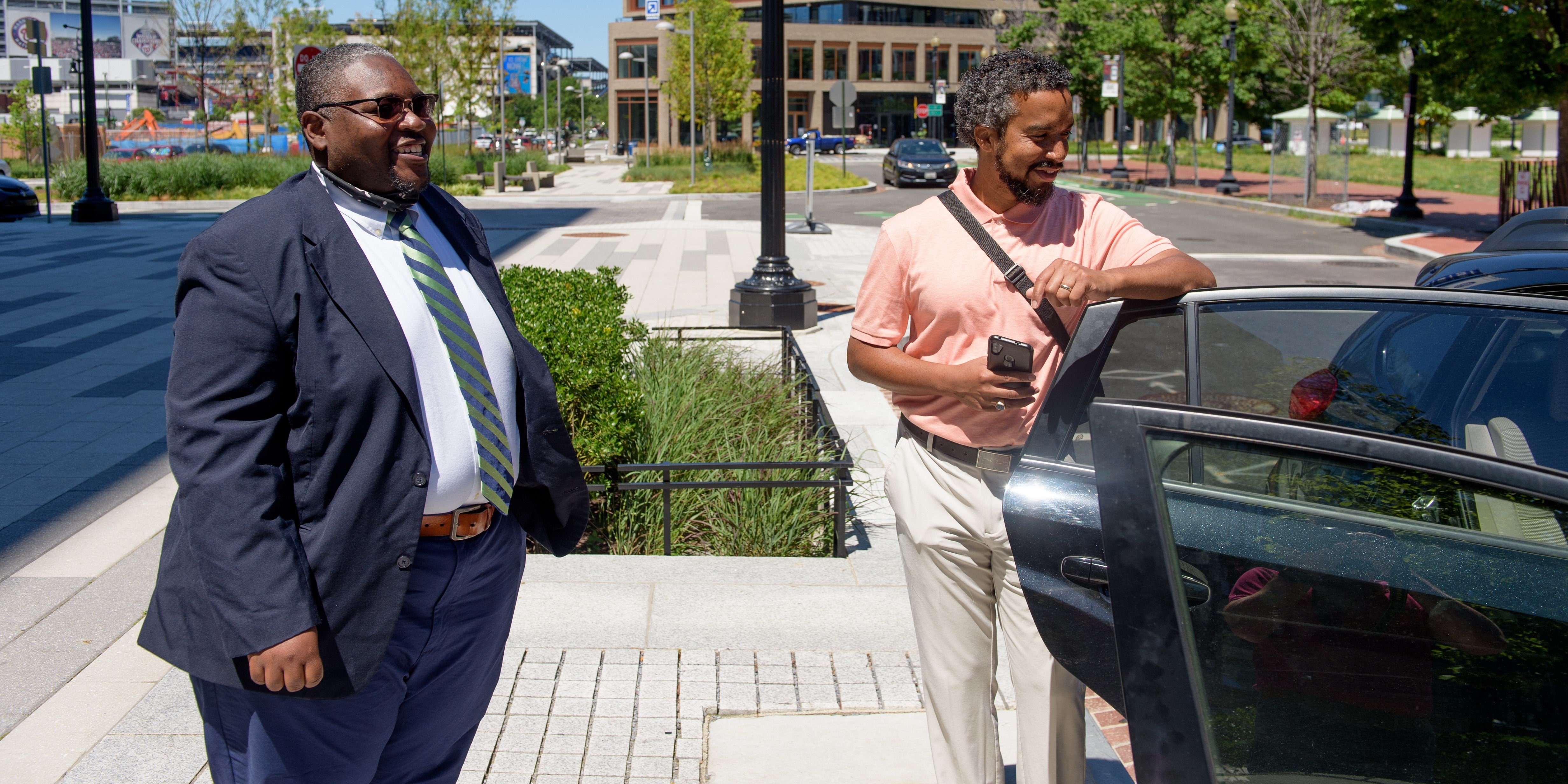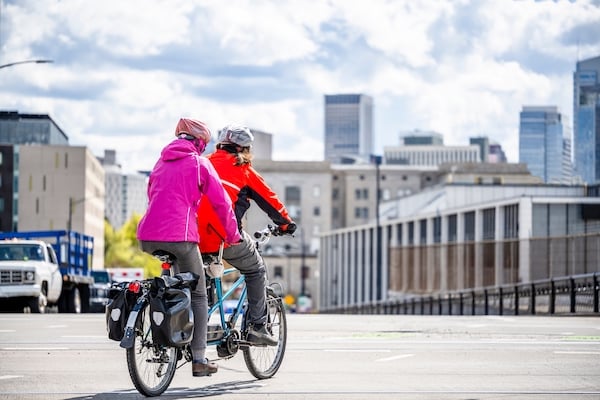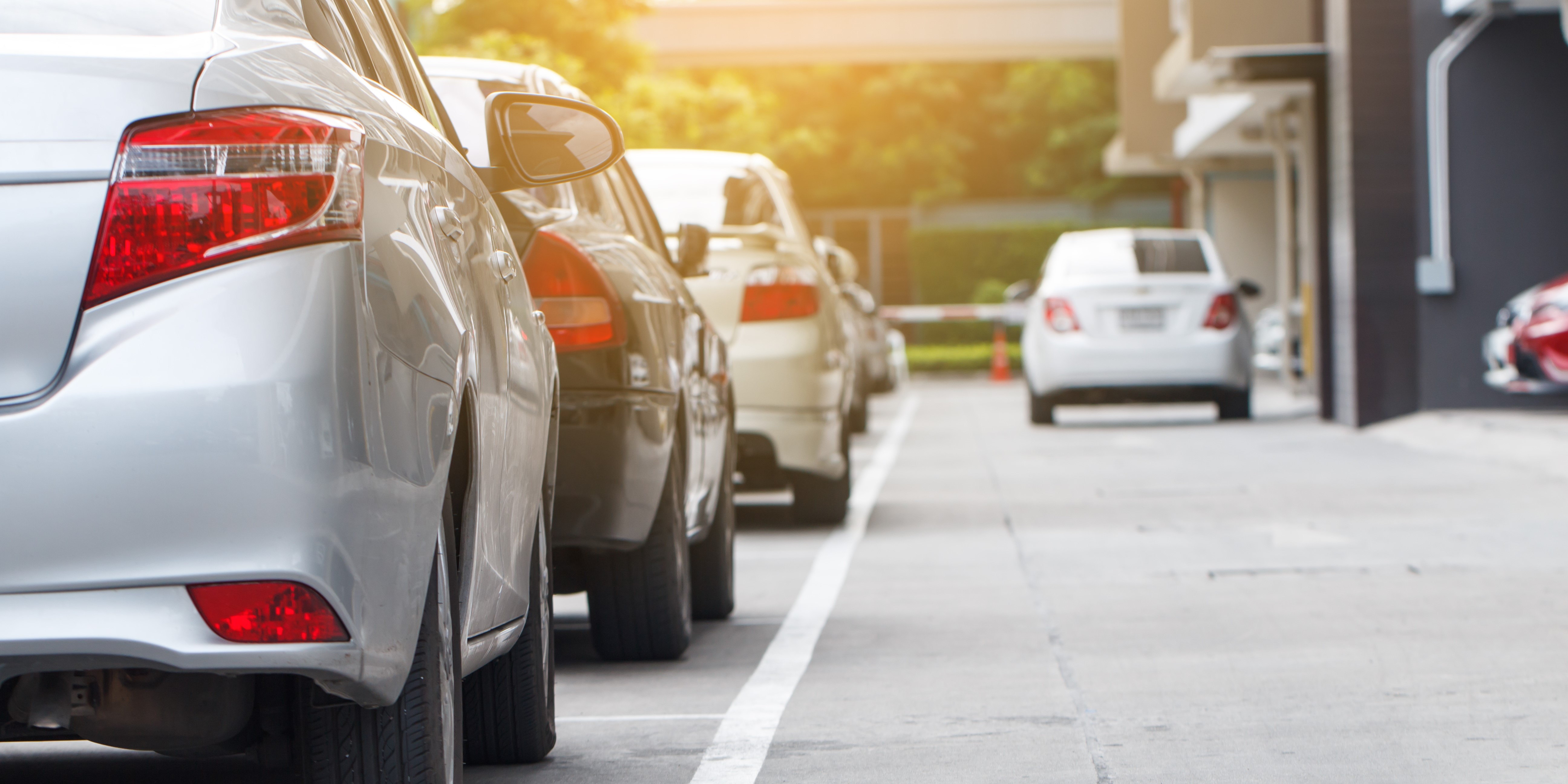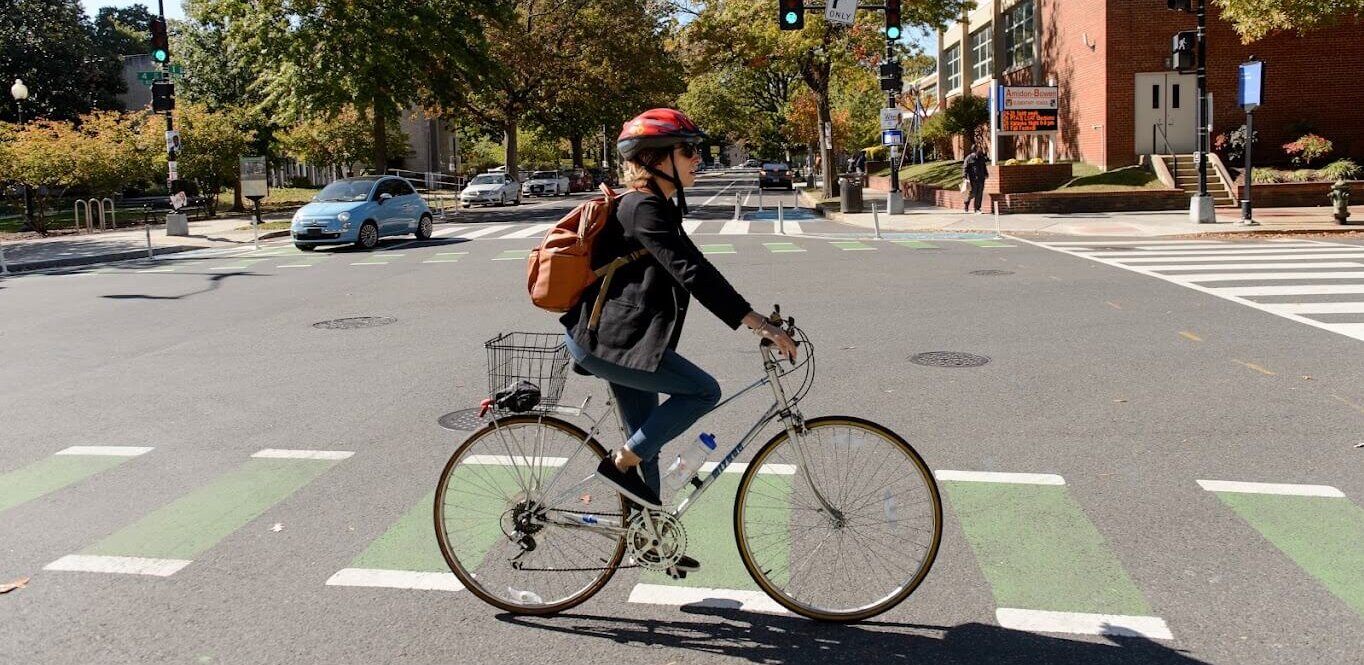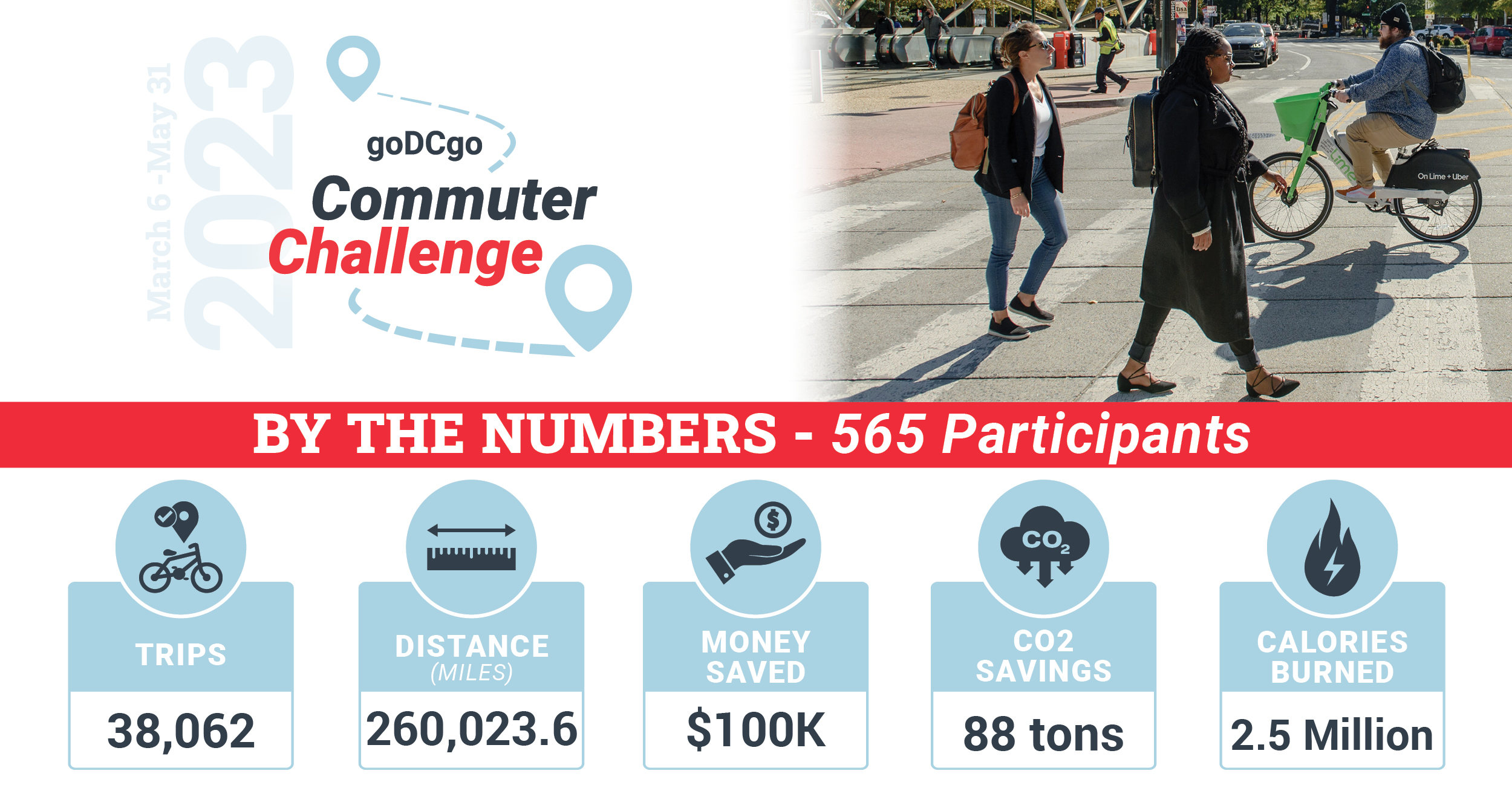Resources for Cyclists
Showers don’t stop the show! Here’s how you can properly and safely bike in case of rain.
Protect yourself
- Visibility can be limited, so wear bright clothing.
- Wear waterproof clothing that is breathable with layers underneath.
Protect your bike
- Front and rear fenders will keep you and your bike dry.
- Lube your chain before and/or after a wet ride to replace the lube that washed off.
- Drip chain lube down into your brake and shifter cables to avoid rust.
Cornering
- Make your turns slowly.
- If you need to brake during a turn, apply the brakes slowly.
Braking
- Water on the rims will make it harder to stop.
- Apply the brakes lightly to clean off the rims before you need to stop.
- Allow a greater distance for stopping.
Hazards
- Bridges, metal grates, and painted lines and crosswalks can be very slick.
- Avoid puddles as they may conceal deep potholes.
- During the first few minutes of rain, oil seeps from the roadway making it very slick.
Keeping a clean bike, especially the chain, can prevent rusting, maintain shifting, and minimize the amount of bike grease buildup. The frequency is up to you, but we suggest cleaning your bike after every heavy rain or at least once a month.
What You Need:
- Liquid degreaser (bike-specific degreaser; avoid kerosene and turpentine)
- Bike lube (wet or dry: wet is best when riding in wet conditions but dirt/grit will stick; dry attracts less dirt/grit but rinses off easily if caught in the rain)
- Clean rags (old t-shirts work great)
- Bucket or wide bowl
- Water
- Soap/general cleaner (diluted dishwashing soap or preformulated bike wash cleaner)
- Brushes (different sizes and shapes; used toothbrushes work great)
- Wear clothes you’re willing to get messy and consider plastic gloves to avoid grease-stained hands. Never use WD-40.
What to Do:
- Location: Turn your bike upside down in an open outdoor space. If inside, put down some towels or newspaper, or ride to your local car wash.
- Rinse: Rinse with a hose or bucket of water to get rid of the big dirt and grit. Any bit of gravel or sand left behind will scratch your paint when you scrub. Don’t spray with too much force or you could waterlog your parts.
- Scrub: Spray or lather up your entire bike with degreaser using 1:1 water:degreaser and scrub the dirtiest parts first, like your drivetrain. Use your toothbrush or scrubber on your chain, chain ring (front gears), and sprockets (rear gears). After a thorough scrub, use the rag to get any small spots missed in your frame.
- Rinse: Gently rinse while removing as much as of the degreaser as possible. The more degreaser remaining, the more dirt it will attract later. Don’t spray with too much force or you could waterlog your parts.
- Dry: Dry your bike thoroughly. We recommend drying off your bike, especially the drivetrain, every time it’s exposed to wet conditions. Rusting is a no-go.
- Re-lube: Lube your chain while your bike is still upside down. It’s all about the technique. You want to get a drop of lube in every chain link. Then, rotate your pedal a couple times so the lube settles into the chain. The chain is the only part that requires lubing.
- Remove Excess: Remove as much excess lube as possible from your chain using the rag or your bike will quickly collect more dirt.
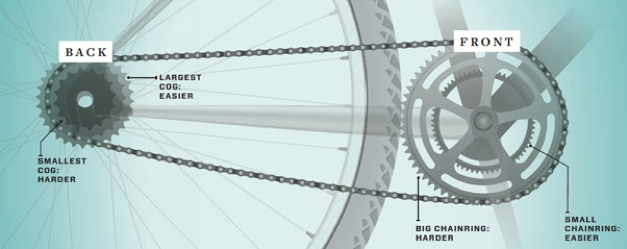
Shifting gears may seem like a basic skill, but the lingo certainly is not. This skill is also important for greater comfort and power as a confident cyclist.
- The Gears: Most bikes have two or three chainrings in the front and anywhere from 7 to 11 gears, or cogs, in the back. Moving the chain from the smallest rear cog to the largest eases your pedaling effort incrementally. Moving it between the chainrings in the front makes pedaling feel easier in a smaller chainring and harder in a bigger one.
- The Shifts: The left-hand shifter changes the front gears; the one on the right control gears in back. Just remember: RIGHT = REAR. It’s perfectly fine to use only the rear cogs and the small or middle front chainring if you’re just getting comfortable on a bike. You can also look down to see what gear you’re in.
- When to Shift: Bikes have gears so you can pedal (relatively) comfortably no matter what the terrain. Shift to an easier gear on climbs or when you’re riding into the wind. Use a harder gear on flats or if the wind is blowing from behind. When in doubt, shift before the terrain changes. When you shift, ease up on the pedals, especially on hills; if you’re pushing hard, the chain may skip or fall off.
- Avoid Cross-Chaining: This means the chain is at an extreme slant, either in the big ring up front and the biggest cog in back, or the small ring up front and the small cog in back. This not only stresses the hardware, but it also limits your options if you need to shift again.
- Cheat Sheet:
- For uphills and headwinds, use the small or middle front chainring and bigger rear cogs.
- For downhills, use the large front chainring and a range of rear cogs.
- For flat terrains, use the small or middle front chainring and smaller rear cogs.
You may not be a new biker, but these could may be new laws to your knowledge. Before you head out for your next ride, review the bike laws in the District of Columbia.
- Helmets are required for youth under the age of 16.
- Cyclists must obey traffic laws.
- Cyclists must ride with traffic.
- Follow all traffic signs and lights, posted signs, and markings.
- Cyclists must yield the right-of-way to pedestrians in a crosswalk.
- Cyclists are allowed to split lanes to pass other vehicles.
- Cyclists are allowed to ride two abreast.
- Cyclists are NOT required to use bike lanes.
- Cyclists are NOT required to ride in the right portion of the traffic lane.
- Cyclists are NOT required to register bikes.
- Bikes are permitted on the Metrorail and Metrobus at all times.
- Riding on the sidewalk is NOT allowed in the downtown central business district (CBD). The CBD is bounded by 2nd Street NE and SE, D Street SE and SW, 14th Street SW and NW, Constitution Ave NW, 23rd Street NW, and Massachusetts Ave NW.
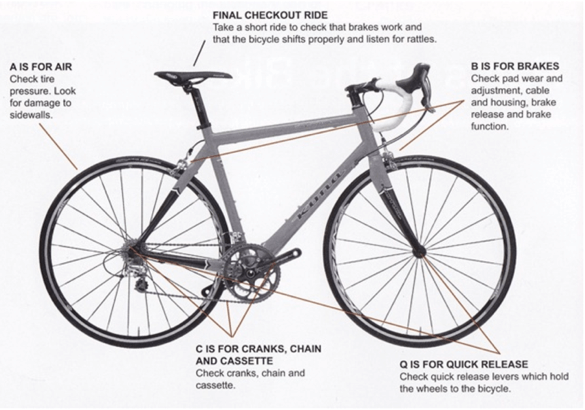
Do you own a bike? Be sure to perform some basic maintenance before going for a ride using the “ABC’s.” The ABC Quick Check is an easy-to-remember, fast way to make sure your bike is ready to go. It helps you identify up front things that could become inconvenient problems in the future.
- A = Air. Squeeze the front and rear tires to make sure they’re firm. Check the sidewall of your tire for the recommended tire pressure and use a pump to fill to that amount. You should also check for any cuts, tears, rocks, or other flaws in tires. Proper tire inflation and care helps prevent flat tires. Watch the video.
- B = Brakes. Check both hand brakes (if your bike has two) by making sure the whole brake pad squeezes tightly on the wheel’s metal rim, not on the rubber tire or empty air. There should be space between the hand brake lever and the handlebar. If your brakes do not fully stop your bike, do not ride until you get them fixed!
- C = Chain. Check to see if the chain is dry or rusted. If so, apply a tiny drop of chain lube to each link. Each link should be free of rust and debris.
- Quick = Quick Release. Usually found on seat posts and at the center of wheels, quick release levers make it easy to adjust or remove parts of your bike for maintenance and storage purposes. Make sure any quick releases are closed and pointed toward the back of your bike.
- Check = Check. Do a routine inspection of your entire bike for any broken spokes, missing nuts or bolts, or a loose seat. This will also help you catch any potential problems before they develop into safety hazards. Fix any small issues before you ride to prevent injury to yourself and damage to your bike. Contact a local bike shop if you’re unable to fix any issues with your bike. Watch the video.
Even though the ABC Quick Check is good to keep in mind every time you ride, don’t overlook regular maintenance by a bike mechanic. If you ride regularly, you should get twice-yearly tune-ups to ensure that more complex, hard-to-evaluate components like spokes, bearing surfaces, derailleurs, and cables are inspected and serviced regularly.
If you’re a frequent cyclist, then you know that flat tires are nearly inevitable, so you should know how to fix-a-flat! It’s an easy process that you can pick-up pretty quickly. Watch a demonstration here.
What You Need:
- Tire levers
- Pump
- Patch kit or spare tube
What You Do:
- Pull your wheel off using tire levers.
- Remove tube from inside tire and check for punctures or tears.
- Use the patch kit to repair a small leak or replace the tube with your spare.
- Slightly inflate the new tube and replace the new tube inside the tire.
- Put the tire back on the wheel, and the wheel back on the bike.
- Tighten any quick releases or brakes you may have loosened to get your wheel off.
- You’re all set!
Can you go the distance?! Test your skills trying out these long-distance bike trails that spread across the District of Columbia, Maryland, and Virginia.
The Zoo Review
- This bike route uses both Rock Creek Park and the Capital Crescent Trail, with an optional stop at the National Zoo. Basically, this route heads south along the Rock Creek Parkway, past the National Zoo, towards the Georgetown district. This section is all downhill, using a mixture of on-road and side paths. There are some unpaved sections along the path, however. Once you reach Georgetown, you have several options. You could hang a right onto K street (underneath the Whitehurst Freeway) and follow this to the Capital Crescent Trail Head. Optionally, you can take the C&O Towpath from its trail head (just north of K street) for about 3 miles, rejoining the Capital Crescent Trail at Fletcher’s Boathouse. You can also continue south past K Street to visit the Lincoln Memorial and the Capital Mall. The Capital Crescent Trail will also take you north to Bethesda, MD. There are two suggested starting points: Meadowbrook Park is located near the intersection of East-West Highway and Beach Drive. This location provides plenty of free parking. Another good starting point is the Capital Crescent Trail Head in Georgetown. Although free parking is harder to come by here, this starting point allows you to attack the long gradual climb to Bethesda first, then enjoy the long downhill ride through Rock Creek Park.
The WODCO Loop
- If you have a full day to spare, then this is a great way to do it! The trail is easy to follow. Just take the Custis Trail from Teddy Roosevelt Island, follow the W&OD to Leesburg, follow Route 15 North (by making a right at the South King Street crossing) for about 3 to 4 miles, cross the Potomac at White’s Ferry (bike toll = $1), and return to DC via the C&O Towpath. Total trip length is about 75 miles. There is also an 85-mile option if you go past National Airport and catch the W&OD in Shirlington, VA. Food is much more plentiful along the Virginia side of the route.
C&O Towpath
- Operating for nearly 100 years, this canal has been turned into a National Historic Park. The 184.5-mile long Chesapeake & Ohio Canal is located along the north bank of the Potomac River, starting in Washington, DC and ending in Cumberland, MD. However, the canal’s towpath remains a favorite of hikers, joggers, and bicyclists. Before you venture on your epic journey, we strongly recommend trying some shorter trips to prepare yourself. The towpath is not paved (the surface is typically clay and crushed stone), so it is a bit rough. The first 20 miles is the most heavily used and is a good place to practice. Please note that multiple items are closed due to hazardous conditions or maintenance. See towpath and park conditions. Also, the footbridge across the Potomac River connecting the C&O Canal to Harpers Ferry is indefinitely closed due to damage from a train derailment. Click here for further details.
DC to Thurmont
- Here is a “no nonsense” route between Washington, DC and Thurmont, MD. The southern half of the route tries to use bike-friendlier roads and side paths through DC’s suburbs. As the route progresses, it follows the lightly traveled state highways of northern Maryland’s rural countryside. However, this route does require riding with some high-speed traffic, so only fairly experienced cyclists should use this route. The route leaves DC from the popular Capital Crescent Trail and follows the shoulders of Bradely Blvd and Seven Locks Road. Between Rockville and Germantown, the route uses a combination of suburban streets and side paths along Great Seneca Hwy, Muddy Branch Rd, and Route 355. Soon after crossing Route 27, the route becomes more rural and hilly. Route 355 becomes a tw- lane highway with narrow shoulders. After passing Hyattstown, MD, the route follows Route 75. This is a lightly traveled highway that lacks shoulders in some sections. The main trouble spots are between Route 80 and I-70, and the mile or so before Libertytown, MD. From Libertytown, it is basically a straight shot to Thurmont along Route 550.
Washington to Baltimore
- Surprisingly, the urbanized Baltimore/Washington corridor contains a few rural bike-friendly routes tucked in between the busy towns and highways. There are several hills along the route, but none are terribly difficult. Please be aware that much of this route is on-street. Although the majority of these roads are lightly traveled, many lack shoulder space, so you need to be comfortable riding in these conditions. Due to road conditions, you may wish to avoid this route during weekday rush hour periods. The total route length is about 47 miles each way. The round trip could be spread over two days, thus making this a really nice weekend getaway. You can spend Saturday evening exploring Baltimore’s Inner Harbor and then make the return journey on Sunday.

